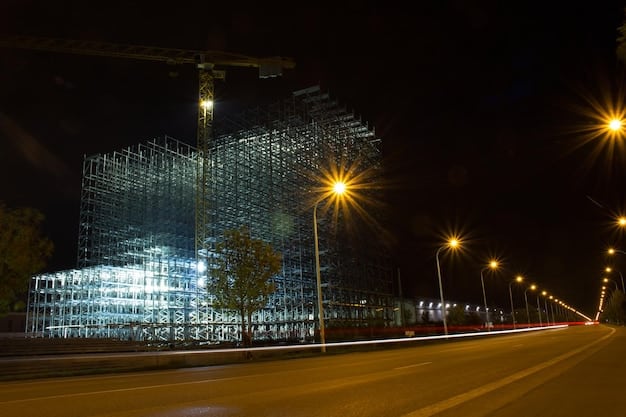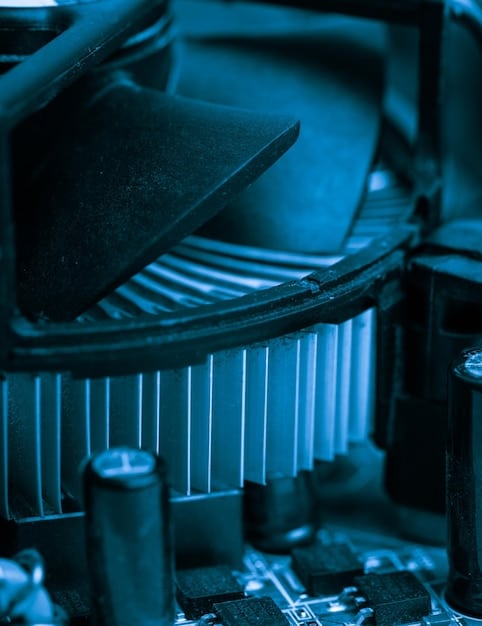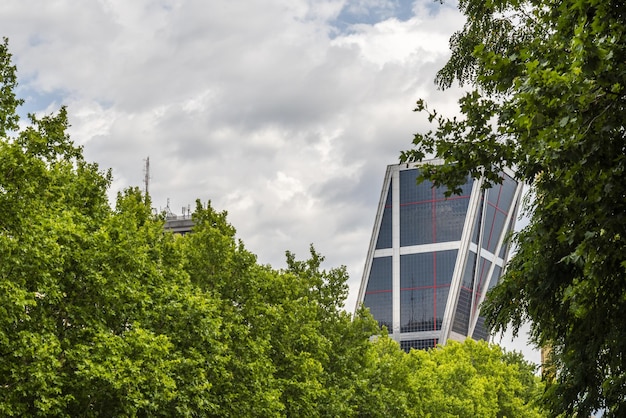Business Investment Outlook: Analyzing the 1.8% Increase in Non-Residential Fixed Investment

The business investment outlook reveals a projected 1.8% increase in non-residential fixed investment, indicating potential growth in structures, equipment, and intellectual property products that drive economic expansion within the US.
The latest business investment outlook points to a promising trend: a projected 1.8% increase in non-residential fixed investment. What does this mean for businesses and the broader economy?
Understanding Non-Residential Fixed Investment
Non-residential fixed investment encompasses the expenditures businesses make on structures, equipment, and intellectual property products. These investments are crucial for boosting productivity and driving long-term economic growth. When businesses invest, they create jobs, stimulate innovation, and enhance their competitiveness.
This category of investment is a key indicator of business confidence and future economic prospects. A rise in non-residential fixed investment suggests that businesses are optimistic about the future and are willing to commit capital to expand their operations.

The Significance of a 1.8% Increase
A projected 1.8% increase in non-residential fixed investment signals a positive shift in the economic landscape. While it may seem modest, this growth rate reflects a gradual but steady improvement in business sentiment and investment activity. This increase can have ripple effects throughout the economy.
This moderate increase suggests a cautious optimism among businesses. They are investing, but perhaps at a measured pace, considering various economic uncertainties. Understanding the factors driving this growth is essential for policymakers and investors alike.
Factors Driving the Increase
Several factors contribute to the projected increase in non-residential fixed investment:
- Technological Advancements: Investments in new technologies, such as automation and artificial intelligence, are driving demand for advanced equipment and software.
- Government Incentives: Tax incentives and other government policies aimed at promoting investment can encourage businesses to allocate capital to new projects.
- Increased Demand: Rising consumer and business demand can spur investment in capacity expansion to meet growing needs.
These factors interact to create a favorable environment for non-residential fixed investment, supporting the projected growth.
In summary, the 1.8% increase is a nuanced indicator, reflecting a mix of underlying economic drivers and cautious business sentiment.
Analyzing Investment in Structures
Investment in structures forms a significant portion of non-residential fixed investment. This includes the construction and renovation of commercial buildings, factories, and other infrastructure projects. Increased investment in structures often reflects growing business activity and expansion plans.
The demand for new commercial spaces and industrial facilities can drive up investment in structures. Additionally, investments in public infrastructure projects, such as roads and bridges, can also contribute to this category.

Trends in Structure Investment
Several notable trends are shaping investment in structures:
- Sustainability: There’s a growing emphasis on sustainable and energy-efficient building designs, leading to investments in green technologies and materials.
- Urbanization: The continued urbanization trend is driving demand for commercial and residential structures in urban centers.
- E-commerce Growth: The expansion of e-commerce is fueling investment in warehouse and distribution facilities to support online sales and logistics.
These trends highlight the evolving nature of structure investment and the factors that are likely to influence future growth.
Overall, investment in structures is a dynamic area that responds to broader economic and societal trends, driving innovation and expansion in the construction sector.
Equipment Investment: A Key Driver
Equipment investment is another crucial component of non-residential fixed investment. This includes businesses purchasing machinery, vehicles, and other equipment to enhance their production capabilities and improve efficiency. Growth in equipment investment often reflects technological advancements and increased automation.
The need for businesses to modernize their operations and stay competitive drives demand for new and upgraded equipment. This category of investment is particularly sensitive to changes in business confidence and economic conditions.
Factors Influencing Equipment Investment
Several factors play a role in shaping equipment investment trends:
- Technological Innovation: The rapid pace of technological innovation drives businesses to invest in cutting-edge equipment to stay ahead of the curve.
- Labor Costs: Rising labor costs can incentivize businesses to invest in automation and equipment that reduces their reliance on manual labor.
- Economic Outlook: A positive economic outlook encourages businesses to invest in new equipment to expand their production capacity and meet growing demand.
These factors create a dynamic environment for equipment investment, driving innovation and productivity gains.
In conclusion, equipment investment is a critical driver of non-residential fixed investment, reflecting the ongoing need for businesses to adapt and innovate in a rapidly changing economic landscape.
The Role of Intellectual Property Products
Investment in intellectual property products (IPP) has become increasingly important in the modern economy. This includes investments in software, research and development (R&D), and artistic originals. IPP investments drive innovation, enhance productivity, and create long-term value for businesses.
As the economy becomes more knowledge-based, investments in IPP are playing a more significant role in driving economic growth. Companies that invest in R&D and software development are better positioned to innovate and compete in the global marketplace.
Trends in Intellectual Property Investment
Several trends are shaping investment in intellectual property products:
- Software Development: The demand for software applications and digital solutions is driving significant investment in software development across various industries.
- Research and Development: Companies are investing heavily in R&D to develop new products, processes, and technologies that can provide a competitive edge.
- Data and Analytics: Investments in data analytics and artificial intelligence are helping businesses extract valuable insights from their data and improve decision-making.
These trends highlight the growing importance of IPP investments in driving innovation and competitiveness.
In summary, intellectual property products are an increasingly important driver of non-residential fixed investment, reflecting the shift towards a knowledge-based economy and the need for businesses to innovate and adapt.
Economic Impact and Future Outlook
The projected 1.8% increase in non-residential fixed investment is expected to have a positive impact on the overall economy. Increased investment can lead to job creation, higher productivity, and greater economic output. However, the actual impact will depend on various factors, including the pace of technological change and the overall economic climate.
Policymakers and businesses alike should monitor the trends in non-residential fixed investment closely to make informed decisions. Understanding the factors that drive investment can help create an environment that fosters sustainable economic growth.
Challenges and Opportunities
While the outlook for non-residential fixed investment is generally positive, there are also several challenges and opportunities to consider:
- Global Economic Uncertainty: Geopolitical risks and trade tensions can create uncertainty and dampen investment activity.
- Interest Rate Hikes: Rising interest rates can increase the cost of borrowing and make it more expensive for businesses to invest in new projects.
- Skilled Labor Shortages: Shortages of skilled labor can constrain investment and limit the ability of businesses to implement new technologies.
Addressing these challenges and capitalizing on opportunities will be crucial for sustaining growth in non-residential fixed investment.
In conclusion, the projected increase in non-residential fixed investment is a positive sign for the US economy, but it is important to remain vigilant and address the challenges that could hold back future growth.
| Key Aspect | Brief Description |
|---|---|
| 📈Investment Growth | Projected 1.8% increase in non-residential fixed investments. |
| 🏢Structure Spending | Rising demand for commercial facilities & infrastructures. |
| 💻Tech & Equipment | Businesses invest in machinery to enhance operations. |
| 💡IPP Growth | Increasing importance of software and R&D investments. |
Frequently Asked Questions (FAQ)
▼
It includes business spending on structures, equipment, and intellectual property. These investments are critical for economic expansion and productivity gains.
▼
This increase means companies are feeling bullish about the future. Investments will increase, creating even more jobs in the short-term.
▼
Investments in tech are increasing, and becoming more automated. Demand for technology is exploding, requiring new and better software.
▼
Challenges arise from high interest rates which hike rates and slow business. A shortage of labor will impact companies’ ability to grow and produce.
▼
It includes R&D investments, artistic endeavors and software. These are important and create long-term asset value in business and industry.
Conclusion
In conclusion, the anticipated 1.8% growth in non-residential fixed investment is a positive yet cautious signal for the US economy. Policymakers and business leaders will have to confront difficulties and use opportunities to sustain expansion.